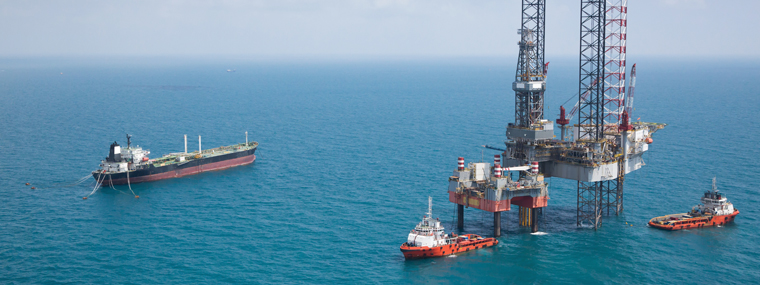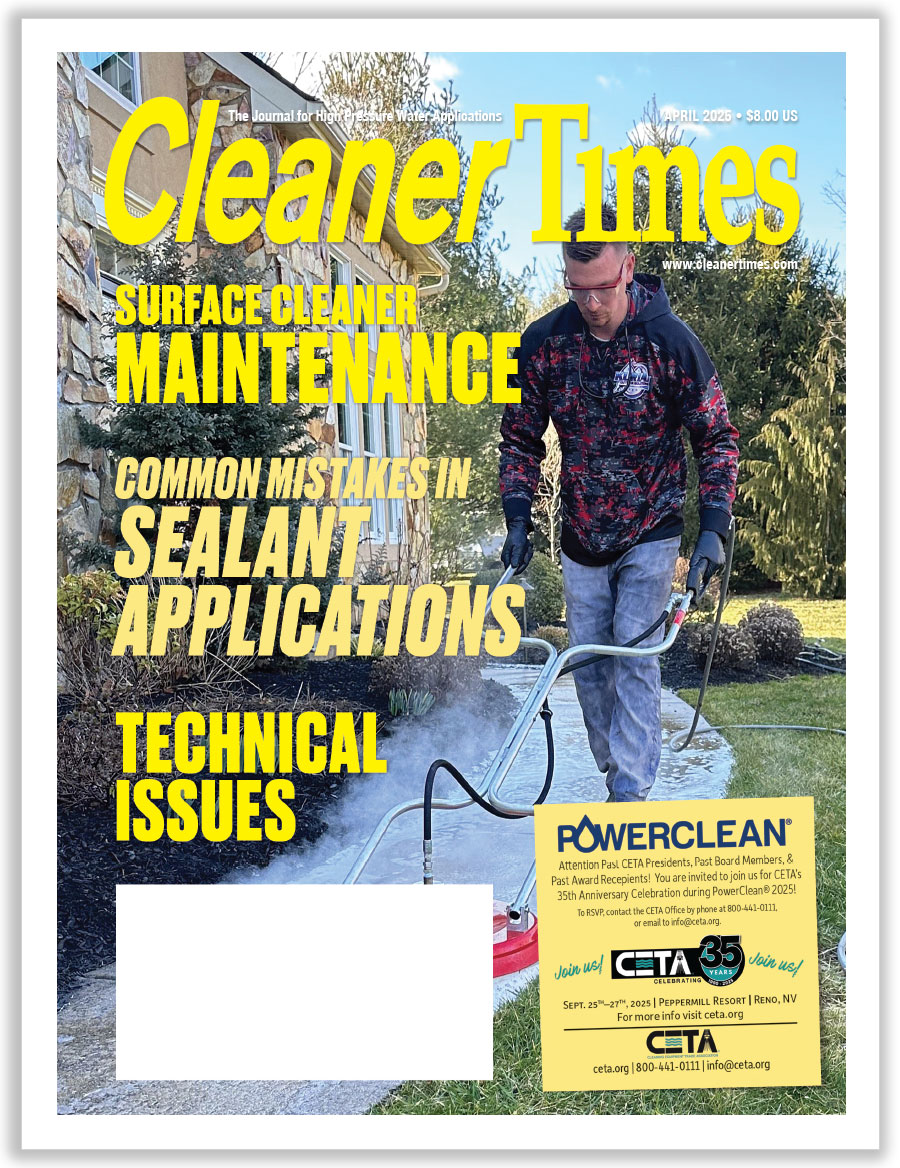
Selling to the Oil and Gas Industry
By Diane M. Calabrese / Published May 2017

What do indium and tellurium have to do with the oil and gas industry? They belong to the category of largely-ignored impacts to the environment caused by an activity. When environmental cost comparisons are made between fossil fuels and alternatives to fossil fuels, such as solar and wind, not every factor is evaluated.
Indium and tellurium are two rare earth metals used in thin-film solar panels. True enough, the oil and gas (O&G) industry also uses some rare elements, such as lanthanum and cerium in conversion of petroleum to gasoline.
Yet indium and tellurium illustrate a point. Assessment of environmental impact from an energy source must look at the whole. Focusing on carbon dioxide emissions and ignoring other environmental costs tied to an energy source makes for a less-than-rigorous comparison.
Obtaining rare earth elements for solar panels and batteries (especially those for hybrid vehicles) requires a great expenditure of energy. The Himalayas yield rare earths, but reserves there are difficult to access for both physical and political reasons. Extreme diffusion of rare elements in North American ranges make places like the Rockies poor alternatives to sites in Asia.
An environmental cost comparison must also include the contribution of large solar arrays on heating, reflectivity (albedo) of the planet, reduction of plant life, and reduction of water absorption of soil. Similarly, the environmental effect of wind turbines, which are documented to change the microclimate in terms of rainfall and wind patterns, has to be evaluated, too.
Everything has an environmental cost. As the cost is tallied more accurately for all sources of energy, the O&G industry will likely measure up well.
That’s not surprising. The O&G industry has been working for decades to produce fuel sources with the least amount of impact on the environment. According to the American Petroleum Institute, U.S. refiners spent $154.4 billion on environmental improvements between 1990 and 2014.
There’s no disputing the O&G industry, which by most ledgers may be the fifth largest sector in the United States, has experienced some shocks in recent years (e.g. crude barrel prices rising to more than $100 in 2014 and then sliding 60 percent or more to current-day levels). Still, it remains a strong and vital player in economic activity. And oil industry analysts for the most part lament the correspondent industry cutbacks that have gone on. Tens of thousands of employees have lost their jobs and planned projects have been cancelled.
O&G companies did not use downsizing alone as the response to a contraction in demand. Some aimed to reconfigure to process vegetable oils or animal fats as potential substitutes for fossil fuel. And all continued with efforts to become more efficient—an effort that ultimately reduces both cost and carbon footprint.
If it seems as though it’s an odd time to consider selling to the O&G industry, it’s not. It may be the perfect time. When the industry gears up again, it will have to do so quickly. A manufacturer, distributor, or contractor with a tie to the industry, even a tie that reflects modest sales, will be a known quantity and called upon to provide more equipment or services and solutions.
The O&G industry encompasses wells (offshore, on shore), refineries, pipelines, hydraulic fracturing (fracking), liquefied natural gas (LNG) production, and much more, with more on the horizon (e.g., methane hydrate). Needs for cleaning (facilities, fleets, rail cars) and water reclamation and treatment systems are significant.
Industry Immersion
Some members of our industry already have a deep immersion in the O&G sector. Two of them share some insights.
“The most challenging aspect of selling to the oil and gas industry, as well as most industrial customers, is getting to the people who are either using the equipment or the people who are making the purchasing decisions,” says Edgar Kron, who is in industrial sales at Bozeman Distributors & Cat Pumps/Honda Power Equipment & Multiquip in Baton Rouge, LA. “In today’s world, you cannot just drop in at a plant to drop off a business card or a catalog, given the security procedures now in place.”
Layers of security and certification, along with documentation, are part of the contracting process across business sectors today. The O&G industry has among the most stringent requirements for anyone—employee or not—working on site. Thus, initial access for discussion purposes may be at a remote location.
“If you are lucky enough to get an appointment, the employee will usually meet you in a visitor center or in the parking lot,” says Kron. “It is rare to get into the plant to actually see the application. Making the right contacts takes creative thinking and being in the right place at the right time.”
In the course of working with the O&G industry, there is much to learn. “The most fascinating thing is the unique applications,” says Kron. “Many applications are proprietary.”
Discussing possibilities and aiming to help customers work toward solutions brings interesting results, too. Not everything is possible with certain budget parameters. “Some applications are just not cost effective due to the results expected by the customer,” says Kron.
Moreover, even the best solution can be shelved if there is an economic downturn involving the industry. “We worked with an oilfield service company to clean drilling mud tanks with an automated system similar to a drive-thru carwash,” explains Kron. “After some initial discussion and budgetary issues, the oil market took a major dive, and the project was canceled. At this time, the project is not cost effective to complete.”
Another member of our industry who has deep experience in the O&G industry is Roy G. Chappell, CEO of Chappell Supply and Equipment in Oklahoma City, OK. He reminds us of the varied requirements of the vast sector.
“The oilfield challenge comes in many different demands,” explains Chappell. “Each division of the oilfield has different problems they deal with. Finding the real problem and how to handle it is an undertaking itself.”
The safety at facilities is of paramount importance, ranking alongside security. Any business working with an O&G company will be expected to meet all the same safety protocols as any employee of the company. Finding a solution or developing an application for the company presents many challenges.
“Pipeline or midstream companies need methanol pumped at varied gpm, depending on the temperature and flow of the pipeline,” says Chappell. “You need to use variable speed, explosion-proof motors. Working with Cat Pumps, we were able to come up with a pump that would withstand the methanol, yet give hours of reliable use in the field. The colder the climate, the more use the unit will receive.”
Requests vary and each is singular. “Another downstream company had an unusual request for a pressure-washer and wastewater treatment system in the field,” says Chappell, adding there was an important proviso. “Everything had to be self-contained and portable to move from location to location.”
A third downstream company also sought assistance from Chappell’s firm. “They needed a wash pad, pressure washer, plus wastewater treatment in a portable state,” he explains. “The first time we built up a system for them, the wash pad and waste-water system were built into a 20-foot Conex shipping container box. This required some special plumbing to overcome the problems in the field. The second Conex box contained the pressure washer.”
Providing solutions for a customer necessitates a can-do approach. “Being able to set the units up in the field and keep the plumbing from freezing can make you scratch your head thinking it through,” says Chappell.
After the first portables were built, used, and assessed, a subsequent iteration improved on the design. “The next ones we built were in a 40-foot Conex, making the insulation, plumbing, and connections much easier,” says Chappell. “These units are easy to move on a flatbed from one location to the next and can handle the environment [extreme negative temperatures, as low as 50F degrees below zero] in the winter but do get toasty in the warm weather.”
Oil and Gas Optimism
No one is euphoric about the current economic activity level, but there are cautious optimists everywhere, including in the O&G industry. Writing for Deloitte in the CIO Out-look section of the February 9, 2017, issue of The Wall Street Journal, John England, (Vice Chairman, US Energy & Resources Leader, and US and Americas Oil & Gas Leader for Deloitte LLP) sounded many positive notes.
One positive note is a prevailing outlook that O&G supply and demand will reach equilibrium in the first part of this year. Another is that both the United States and global economies are beginning to grow. He characterizes 2017 as “the slow road back.”
Finally, England ends his assessment with a nod toward the people in the O&G industry—individuals whom he sees as resilient, bright, and innovative—or in other words, having just what it takes to forge ahead. Given our industry is filled with individuals who possess the same attributes, finding a path to selling in the oil and gas industry seems a good decision.





